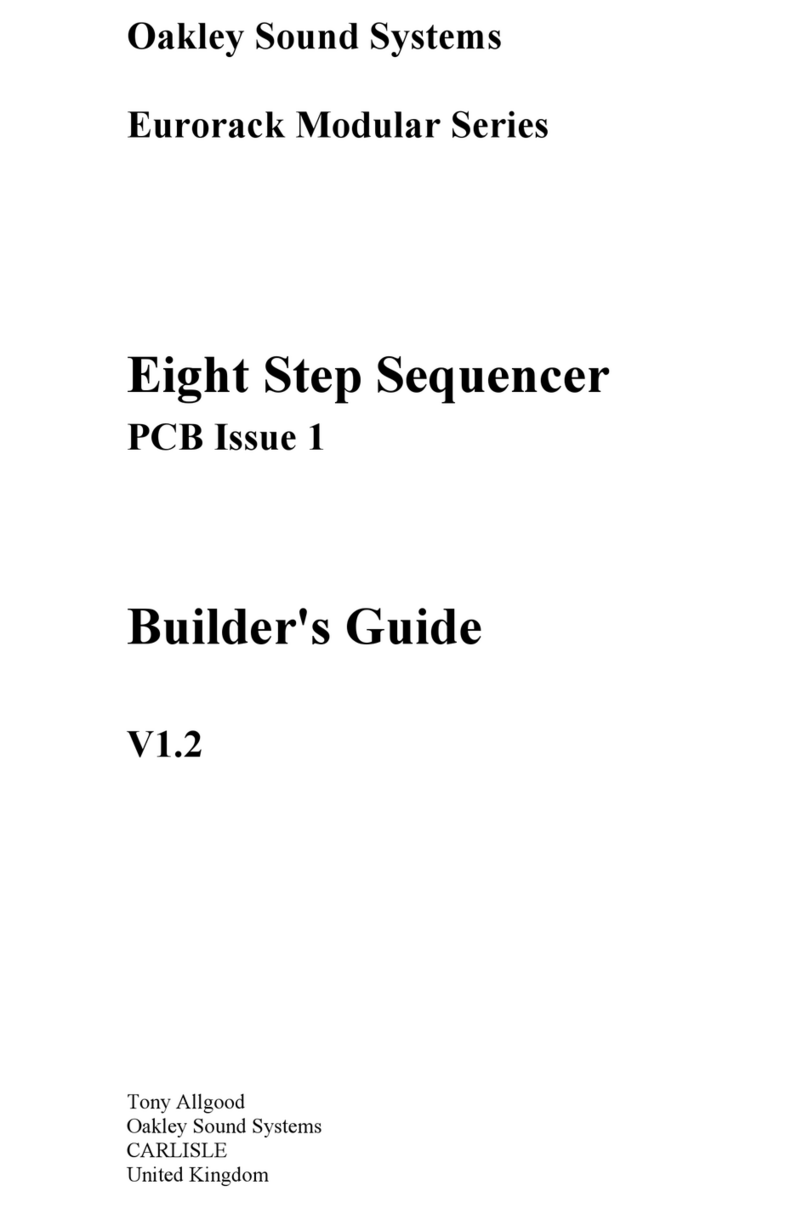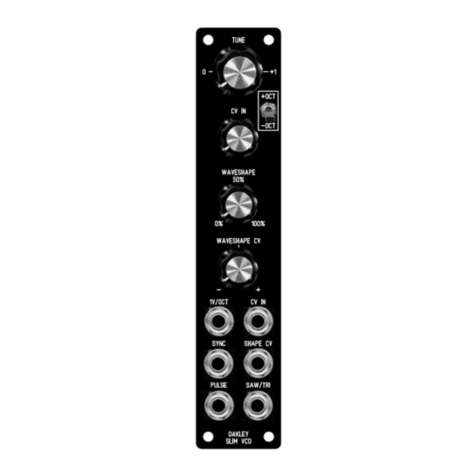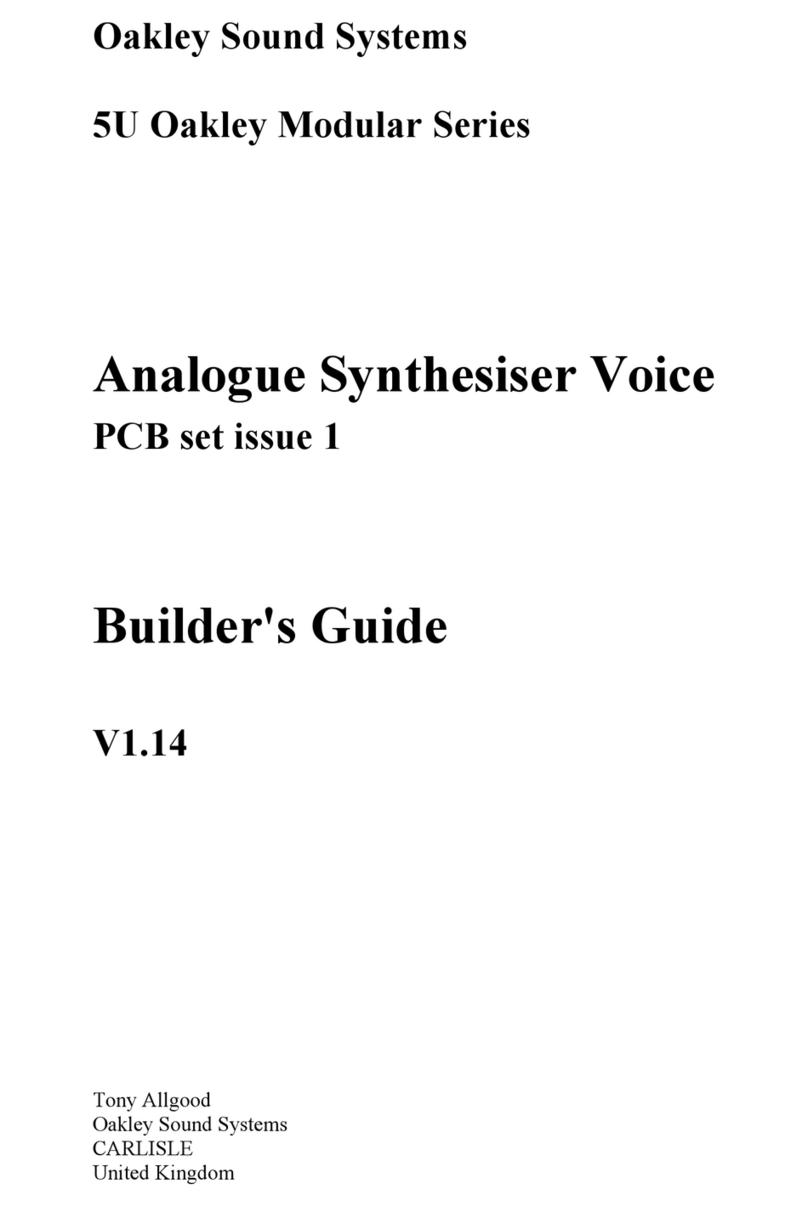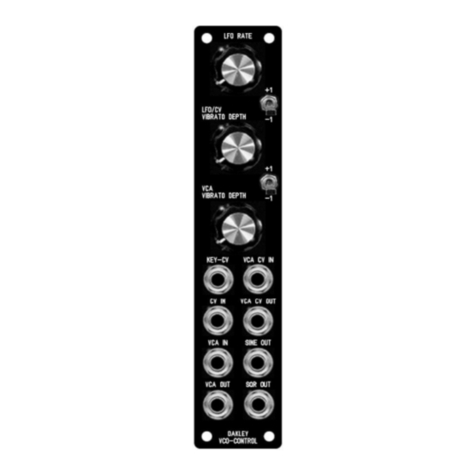In this mode there are four LFOs but they are not simply connected so that one LFO controls
its own BBD. This should work well but in practice it doesn't give the sound of the classic
Japanese string machines and effects units that we want to hear. So the SRE 0 Multi Mode
does something much more complicated and, in doing so, can mimic most of the well known
ensembles units of the past.
S EREO Mode
This is the simplest of the SRE 0's three multi modes. Only two BBD lines are used in this
mode, one for the left hand channel and one for the right. Each BBD produces a similar delay
when not modulated so that the sound from both left and right is more or less the same. Two
LFOs, one whose output is a triangle wave, the other, whose output is a sine wave, are used
as modulation sources. The rate and depth of each LFO is controllable from the front panel
controls. Both BBDs are modulated by the sum of both LFOs. That is, both LFOs control
both BBDs together. However, there is one important difference between the modulating
signals that are sent to each BBD. The BBD that affects the right hand side operates inversely
to the left hand one. So that when the delay of the left hand BBD is increasing, the right hand
one is decreasing.
When listened to dry the overall effect is like an odd form of panning and vibrato at the same
time. But when the balance pot is turned to around 50% a chorus sound is heard.
DUAL Mode
This mode is similar to the stereo mode but features four LFOs and not just two. Instead of
the right hand BBD being modulated by the inverse of the same LFOs that control the left
hand side, this time the right hand BBD gets its own pair of triangle and sine wave LFOs.
However, these LFOs are not completely independent of the left hand side ones. The rate and
frequency controls are shared with the left hand LFOs. Therefore the right hand side LFOs
will track the frequency and amplitude of the left hand side LFOs. The only difference between
the two sides are that the right hand side LFOs always run 20% faster than the left hand side.
This keeps things relatively stable across the stereo panorama, yet, because of the free running
nature of all four LFOs, things are different enough between the channels to give a wide
ensemble sound.
QUAD Ensemble Mode
The RS or VP ensemble mode. The third mode is the most complex. The basic behaviour is
the same as the stereo mode, but the quad mode adds an extra BBD circuit to each stereo
channel. This additional BBD is only controlled by the triangle LFO and not the sine wave
LFO. However, it responds inversely to the other BBD on its channel. So as the other BBD is
increasing in delay, the extra one is decreasing. And because it doesn't respond to the sine
wave LFO, the output of the BBD can be very different to the other BBD on the same
channel. This creates a rich rolling sound. The classic RS or VP string sound involves only the
effected sound, ie. 100% wet. The triangle wave LFOs being set to fairly slow (one cycle
around 5 seconds) but deep modulations. And then with a much smaller amount of faster
(around 5Hz) sine wave modulation added.
7




































